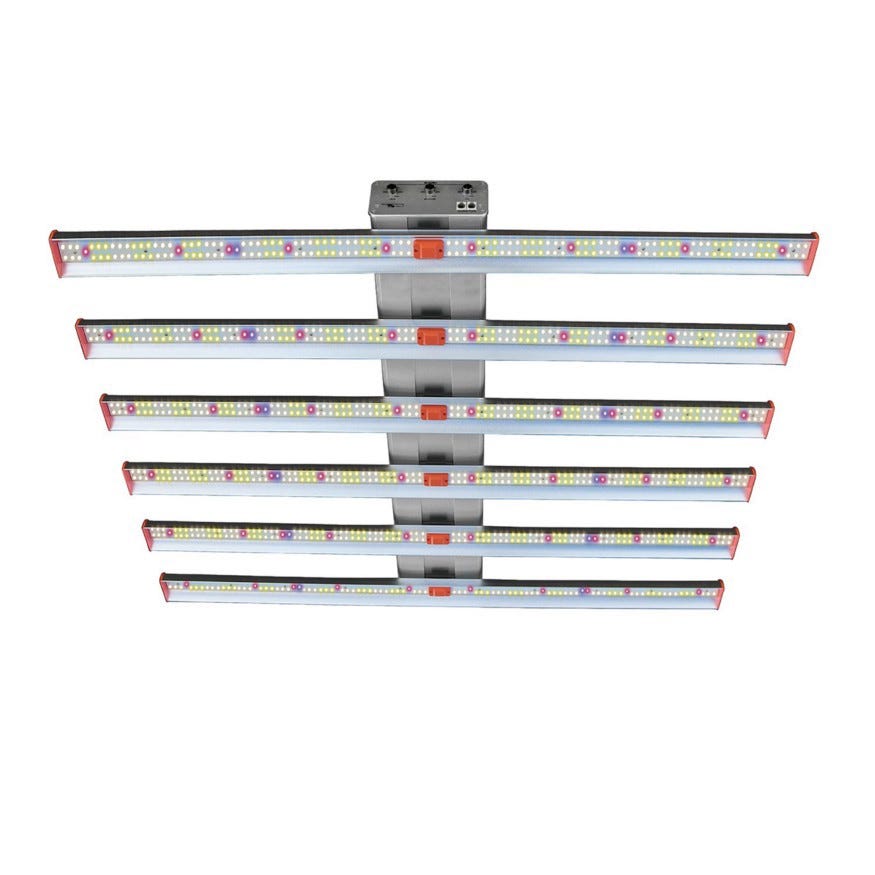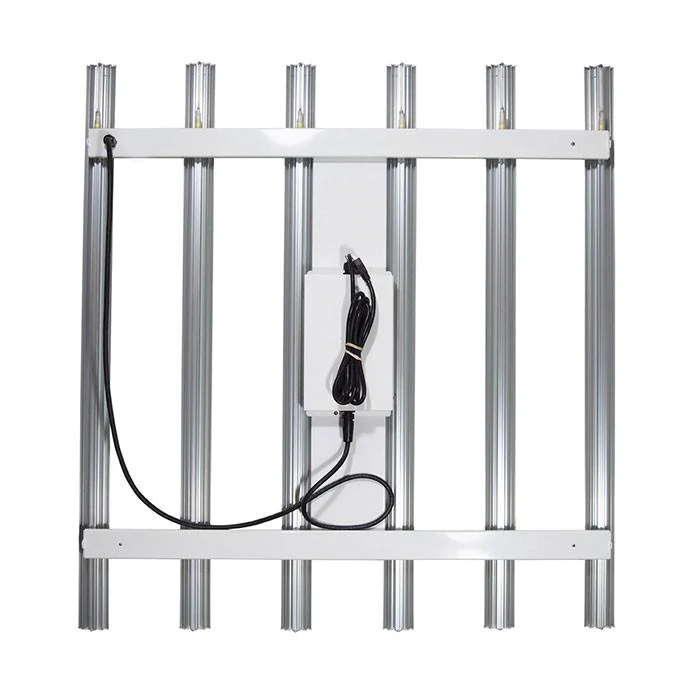- Home
- SHOP ECO FARM
-
TOP BRANDS
-
Grow Lights Brands
- Adjust-A-Wing
- Apollo Horticulture
- Bestva
- Black Dog LED
- California Lightworks
- ChilLED Grow Light
- Eco Farm
- HLG - Horticulture Lighting Group
- Kingled
- Kind LED
- Mars Hydro
- Morsen
- Neilo
- NextLight
- Phlizon
- PlatinumLed
- Roleadro
- Optic LED Grow Lights
- ViparSpectra
- Vivosun
- EYE Hortilux
- IPOWER
- NanoLux
- Phantom grow light
- Gavita grow lights
- Grower's Choice
- Lumatek
- Maxibright
- Yearld Pro
- ThinkGrow
- Crecer Lighting
- Green Sunshine Electric Sky
- fohse aries
- loriflux
- luxx
- fluence
- iluminar
- Lex
- LTC
- Rayonled
- FGI
- PHOTONTEK
- Grow Tents & Kits Brands
- Extraction & Harvest Brands
- Climate Control & Hydroponic Brands
-
Grow Lights Brands
- COMPANY INFO
- COOPERATE WITH US
- Blog
- Sign in
- Home
-
SHOP ECO FARM
- ECO Farm Grow Lights
- ECO Farm LED Grow Lights
- ECO Farm Quantum Board
- ECO Farm Samsung LED Grow Lights
- ECO Farm COB Grow Lights
- ECO Farm Commercial Lights
- ECO Farm Supplemental Grow Light
- ECO Farm Fluorescent grow lights
- ECO Farm HPS & MH Grow Lights
- ECO Farm CMH Grow Lights
- ECO Farm HID/CMH Bulbs & Ballasts
- ECO Farm Grow Tents & Kits
- ECO Farm 2x2ft Grow Kits
- ECO Farm 3x3ft Grow Kits
- ECO Farm 3.3x3.3ft Grow Kits
- ECO Farm 4x4ft Grow Kits
- ECO Farm 5x5ft Grow Kits
- ECO Farm Grow Tent - Standard Style
- ECO Farm Grow Tent - Extension & Roof & Lodge Style
- ECO Farm Extraction & Harvest
- ECO Farm Rosin Press Machine
- ECO Farm Dry & Wet Trimmers
- ECO Farm Oil Accessories
- ECO Farm Medicinal Plants Grinder
- ECO Farm Medicinal Plants Containers
- ECO Farm Medicinal Plants Dryer
- ECO Farm Refrigeration Dryer
- ECO Farm Climate Control & Other Accessories
- ECO Farm Inline Duct Fans
- ECO Farm Oscillating Fans
- ECO Farm Exhaust Fans
- ECO Farm Air Filter
- ECO Farm Duct Muffler
- ECO Farm Ventilation Kits
- ECO Farm Plant Humidifiers
- ECO Farm Plant Dehumidifiers
- ECO Farm Hydroponic Accessories
- ECO Farm Other Accessories
- ECO Farm Hydroponics Microscopes
-
TOP BRANDS
- Grow Lights Brands
- Adjust-A-Wing
- Apollo Horticulture
- Bestva
- Black Dog LED
- California Lightworks
- ChilLED Grow Light
- Eco Farm
- HLG - Horticulture Lighting Group
- Kingled
- Kind LED
- Mars Hydro
- Morsen
- Neilo
- NextLight
- Phlizon
- PlatinumLed
- Roleadro
- Optic LED Grow Lights
- ViparSpectra
- Vivosun
- EYE Hortilux
- IPOWER
- NanoLux
- Phantom grow light
- Gavita grow lights
- Grower's Choice
- Lumatek
- Maxibright
- Yearld Pro
- ThinkGrow
- Crecer Lighting
- Green Sunshine Electric Sky
- fohse aries
- loriflux
- luxx
- fluence
- iluminar
- Lex
- LTC
- Rayonled
- FGI
- PHOTONTEK
- Grow Tents & Kits Brands
- Apollo Horticulture
- Black Box
- CoolGrows
- Eco Farm
- GrowLab
- Gorilla Grow Tents
- Mars Hydro
- Quictent
- Secret Jardin
- Unit Farm
- TopoGrow
- VIVOSUN
- Topolite
-
COMPANY INFO
-
COOPERATE WITH US
- Blog
ECO Farm ECOZ 510W Samsung 301H Chips LED Grow Light VS Spectrum King 600W LED LowPro Flower
March 03, 2023
Growing plants indoors isn’t the hardest job. However, it’s not the easiest either. That said, you have to pay close attention to how much sun exposure you get, how much water your plants absorb, and how much soil is fertilized, among other things. While fertilization and watering can be supervised, lugging a giant potted plant to soak up the sun isn’t a viable solution. That’s where LED grow lights for houseplants come in.
These LED grow lights stimulate photosynthesis in indoor plants, helping them grow year-round, especially in dimly lit rooms with little to no sunlight or in areas with year-round snow. Since these are LED lights, you also won’t have to worry about skyrocketing utility bills. They’re also easy to install, which is great.
So now that we’ve piqued your interest, let’s take a look at some of the best LED lights for growing indoor plants.
When Should You Use LED Grow Lights?
1. Grow crops that require strong broad-spectrum UV rays
Plants that grow tall and form dense bushes need penetrating light to reach the bush to maximize yields. It is also important to have grow lights that are adapted to the flowering stage of the crop. Peppers, for example, thrive in light rich in red wavelengths. Tomato plants produce large fruit when exposed to red and blue wavelengths.
2. Setting up the growing chamber
High-intensity discharge bulbs consume 70% more energy than diodes. A 200 watt LED produces a similar number of lumens as a 600 watt high pressure sodium bulb. Their inability to produce different wavelengths of light limits yield, making them an expensive option for lighting large areas.
ECO Farm ECOZ 510W Samsung 301H Chips LED Grow Light With Separately UV+IR Control

Features:
The ECO Farm grow light is Built with the best parts, Top Bing Samsung LM301H & Osam Chip and brand driver for higher efficacy and longer lifespan; to ensure high-efficiency PPE 2.75umol/J, better heat dissipation, and long service life. Compared with old plant lights, the average PPFD is increased by 30%, and the yield and quality are increased by 50%. With 6 LED growth lights, each rod is covered with high-grade glue, waterproof, and easy to clean, not easy to be filled with dust. This plant growth light also uses a special dimmer, which can precisely adjust the brightness. 0–10 levels are optional. This means that you can see clear brightness levels and record while adjusting. No need to worry about differences. Full-Cycle Sunlike Spectrum, close to natural sunlight. The spectrum applies to the entire stage of indoor planting.
Spectrum King 600W LED LowPro Flower

Features:
The Spectrum King LED grow light is a 660W grow light system with an efficiency equivalent to a 1000W LED. The grow light system is designed for vertical shelving solutions; you mount the lights 3 inches from the plants. Grow lights offer a 4X4 footprint. It offers 141.57 efficacy and a lumen output of 102,000 lumens. LED grow lights feel like plants are getting closer to the sun. The planting system is designed for a 3" tall vertical racking solution. The LED grow light system is the shortest and brightest LED grow light system on the market. The LEDs are rated at 50,000 hours to ensure long life. So don’t worry about spending unnecessarily on grow light fixtures.
What to Look for When Choosing LED Lights for Plants
Durability — Obviously you want your LED grow light panels to be well constructed and sturdy. You want to make sure they are made of the best materials and that the wiring will last over time. Incorrect wiring can generate excess heat, which is not only harmful to your plants, but can also be a fire hazard. This is another great reason to buy the best quality grow lights you can afford.
Cooling System — LED lights are cooler than HID and HPS lights. However, they should still contain a high-quality cooling system. A heat sink within the system should dissipate the heat generated by the lights and move it away from the lighting system and plants.
Color Spectrum — Plants primarily use red and blue spectrum light to complete their growth stages. While HID and HPS systems use full spectrum light to target plant growth, a good LED system will include red and blue light for the perfect blend to help your plants grow. Some growers say that white LED grow lights are the closest to natural sunlight, so the effect is better. However, white LEDs contain yellow and green light that plants cannot use, so it is wasted, reducing the efficiency of the grow light.
PAR — PAR stands for Photosynthetically Active Radiation. In simple terms, this is the emitted light that plants can actually use. While many manufacturers provide details on lumen output (light visible to humans), for grow lights it is even more important to know the PAR output. If your plant doesn’t use it, it’s wasting energy. Manufacturers’ PAR data can be misleading because the value often varies from the center to the edge of the light. Plants down the middle of the light will get the full PAR value, while plants on the edges may get less light. Higher PAR is not necessarily better. In fact, the best LED grow lights will have a lower PAR value because the power will not be concentrated in the center but distributed evenly.
Wattage — When you look at the wattage associated with an LED grow light, it is usually the same equivalent wattage you would need to get the same results in a HID or HPS light. So, an LED grow light listed as 400W can replace a 400W HID or HPS light, but the actual wattage of the LED will be much less. This is how LED grow lights are more energy efficient. First-time buyers often assume that the more wattage a grow light offers, the better. But bigger isn’t always better. As a rule of thumb, you need 32 watts per square foot of growing space for flowering and light-loving plants. Low-light plants like lettuce and herbs only need about 11–18 watts per square foot.
Programmability — If you’re serious about growing, you’ll want to automate as many processes as possible, not just to reduce your workload, but more importantly, to reduce the possibility of human error. The best grow lights on the market offer a full range of programmability, including setting light schedules, changing intensity, and customizing the light spectrum to best suit individual plants.
Conclusion
Hopefully, the information presented above will help you choose the best grow lights for your situation. After all, lighting is critical to growth and flowering, as well as harvest yield. Taking the time to find the right equipment ensures you choose the best fit for your own unique growing setup.
Also in Indoor Grow LED Grow Light
HLG Greenhouse Pro HE HV 630W LED Grow Light VS Geeklight grow light 480W hydroponic led grow light
October 20, 2023
